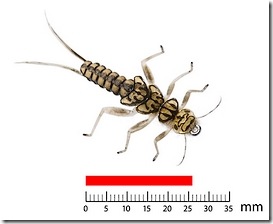 At some point we all flirt with the individual fibers, knotted legs, and artificial or synthetic everything – mostly because the flies look much too delicious to ignore…
At some point we all flirt with the individual fibers, knotted legs, and artificial or synthetic everything – mostly because the flies look much too delicious to ignore…
… about our third fly we begin to wonder about synthetic reality and whether something that takes forty-five minutes to tie can outfish something made from a lumpy dog ear and owl feather.
About the half-dozen mark we’re willing to go back to the imprecise impressionism that is the Royal Coachman Fanwing, and we’re the luckier for it …
Not this fellow, I admire his work very much, and admire his resolve even more ..
He’s got quite a few videos as well as the wing burners and tools to speed the realism, always worth an eyeball.

That is some amazing work for sure, but I can’t escape the feeling that at that level, fly tying is no longer a craft, but an art. My initial impression was: how does that may fly dun float in the fast choppy stuff…Then of course one has to wonder how well they hold up, and can they be tied on the tailgate in a moderate gale? I’m impressed as hell, but it doesn’t seem all that practical for the real world.
It comes to mind that a fly tumbling ass over tea kettle through fast moving current need only be representative to be a convincing omelet. The very thing that a trout might be looking for for breakfast. How many of you have made their best business decisions before coffee arrived?
He was at the last fly fishing show I attended and it didn’t take him that long to tie the fly. Lots of it is printed sheets. I really like the mayfly pattern and copied it using a deer hair wing instead of his fancy synthetic membrane ones.
To answer trout chaser’s question, I think they float pretty good because there is an air bubble trapped in the wings; but I’m not sure how well they’d hold up to repeated trout bites; of course, I could fish them for a season and never have to worry about that contingency.
Silicon rubber nymph legs and bodies….don’t we already have these in the form of Berkeley Powerbait?